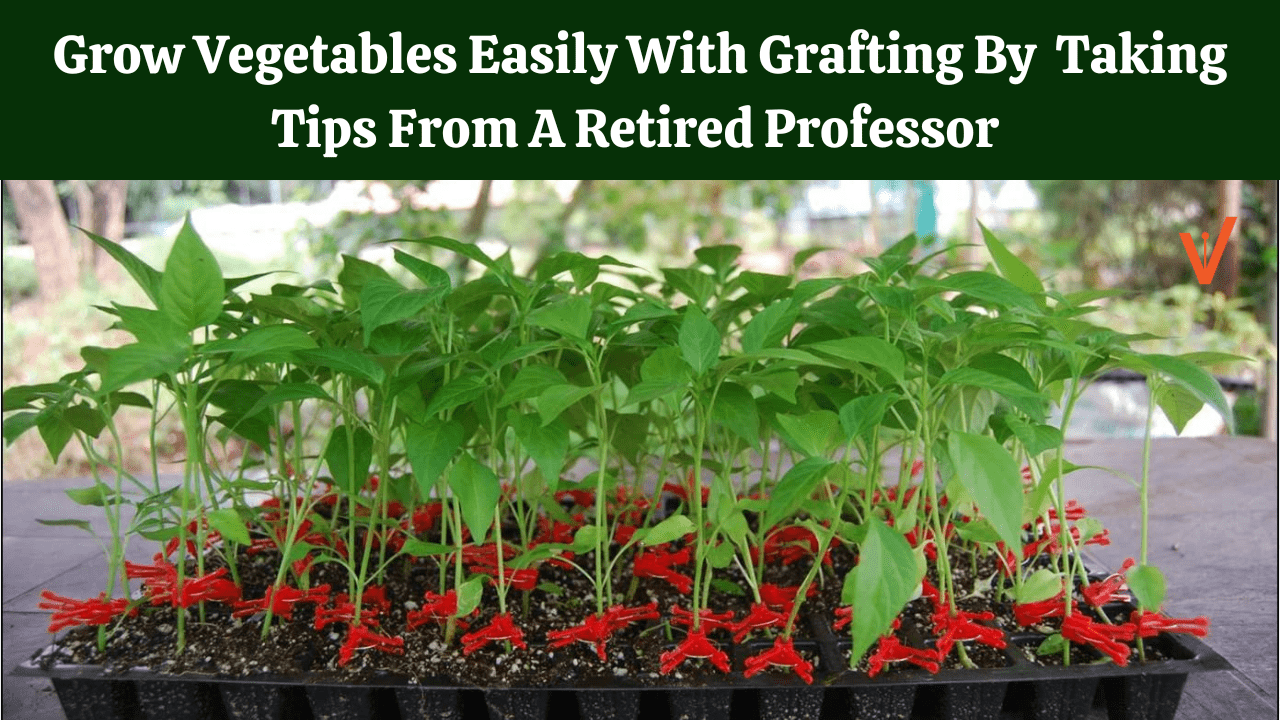Do you know what is horticulture? Or Are you interested in grafting? Then, have a look at the article, completely to learn about the grafting techniques and process to grow different type of vegetables that was clearly explained by the professor.
By following them you can get a good yield and better results in farming. Know completely about horticulture and many more.
Story of a Professor Who Expertise in Grafting
Dr.C Narayanan Kutty is a retired professor at Kerala Agricultural University in Kerala. Know some important things about horticulture that were said by this professor below.
- In today’s Indian economy, horticulture plays a very important role. India produces 320.48 million tonnes of vegetables and fruits.
- Narayanan Murthy is one of the few people who has started grafting to grow plants in Kerala at the Kerala Agricultural University.
- And they succeeded in it and harvested cabbage and cauliflower.
- Even after they succeeded in Kerala, the farmers are not very much interested in trying these grafting methods as we need to plant saplings and grow vegetables, not seeds.
- Kerala farmers are mainly afraid of bacteria wilt, which can withstand bacterial attacks.
- But Narayanan murthy didn’t stop his research and experimented on many types of fruits and vegetables.
- Slowly he started getting orders from nurseries and from many farmers and even agricultural officers visited his university to study the growth of those plants.
Even if you are interested to know, check out the grafting process below that was provided by Narayanan Kutty.
How To Do Grafting Very Easily?
If you want to graft plants, it is a challenging task, and as it is skilled work it requires special training. Andhra Agricultural University provides classes for those who are interested in farming and even nurseries like Kavungal Agrotech in Trissur also provide these seedlings.
Mostly this method will be taken up by the farmers, and the persons who have nurseries.
And even if you are thinking of graft at your home, and if you do not know the procedure. Here is the simple process that is provided by Narayanan Kutty.
- Firstly, collect good-quality seeds that can withstand diseases and plant them.
- At the same time, even plant the seeds which are of local quality.
- Cut both the plants just above the cotyledons, but before cutting them leave two leaves on the top.
- When you think of grafting, it is just not an easy task as we have already seen, it needs skill and patience.
- And it needs to be learned, without learning you cannot able to do grafting.
- Once after cut the plants, keep them in the grafting tray, and it should not have 100 holes.
- Rootstock the water and scion 24 hours before grafting, and water those grafting plants, immediately after grafting.
- Leave the plants in a room and maintain a temperature between 25-29 degrees Celsius.
- Do not disturb them for 2 days completely and on the third day and fifth day with less than an exposure to the outdoor temperature.
- If the sapling wilts within 2 days, you can easily know that the grafting has failed.
- While you can replant on the seventh day, wait for a few more days, till the sapling has healed.
- Once everything is completed, you need to prune the plant for good growth.
- Plants produced using the grafting method are fast growers and give better yields.
Key Outcomes
Hope that the information we have provided in the article about grafting is beneficial for you. Dr. Narayanan Kutty says that “ if you did the grafting effectively, an average of 1000 plants can be grafted within a day very easily.
Each plant will cost Rs.4 on average, and by providing one you will get Rs.4000. Mostly this method is followed by the farmers of Maharashtra, Chhattisgarh, and Karnataka.”
